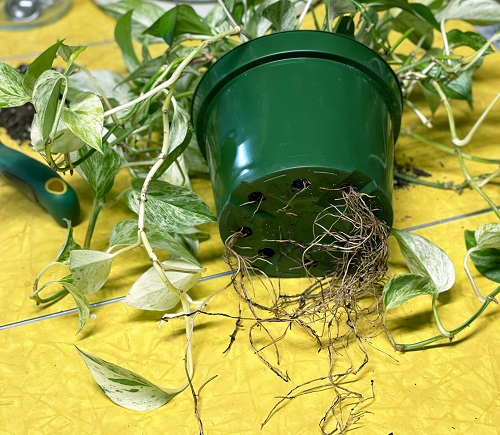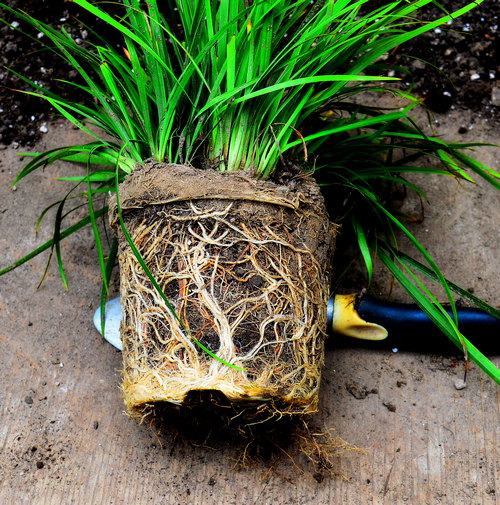If you are not sure how to pick out Rootbound Plant Symptoms, don’t worry! We’ll help you spot them at the right time!
If you notice your plant suddenly wilting with yellow foliage despite taking all the right care – well, you were ignoring the root-bound plant symptoms that lead to this.
What it Means When a Plant is Rootbound?
When a plant is rootbound, it means that the roots have become overcrowded and constrained within the container. This occurs when the plant has been growing in the same pot for a prolonged period – probably more than 3-4 years.
When a plant becomes rootbound, its root system becomes constricted, limiting its ability to function optimally. The crowded roots may struggle to supply sufficient water and nutrients, leading to stress and poor growth.
Common Root-bound Plant Symptoms
1. Stunted Growth
As the roots become constrained in a small space, this limits the plant’s ability to absorb water and nutrients effectively, which also causes it to grow slow, with smaller leaves and reduced overall size compared.
2. Roots Coming Out from Drainage Hole or Topsoil

In severe cases of rootbound plants, you may notice roots emerging through the drainage holes or the topsoil. You will also witness a tangled mass of roots tightly distressed around each other after taking out the plant from the pot.
3. Yellowing Leaves
Rootbound plants often display yellowing leaves, also known as chlorosis. The lack of sufficient space for root expansion leads to reduced water and nutrient uptake, resulting in nutrient deficiencies within the plant.
4. Wilting and Dry Soil

Rootbound plants struggle to take up water because there is less volume of soil in the pot. As a result, the growing medium dries out way too quickly due to increased density.
5. Reduced Flowering or Fruit Production

When the plants are slightly rootbound, you’ll experience more flowers and fruit production but once it passes this stage and becomes strictly rootbound – it starts to face challenges in allocating energy for flowering or fruit production.
With limited access to nutrients, water, and oxygen, the plant’s resources are redirected toward survival rather than reproduction, and it begins to look tired and worn off, which also leads to fewer or no flowers and fruits.
How to Save a Rootbound Plant

Select a new container that is one or two sizes larger (not more than that) than the current one, every 2-3 years or whenever you see the signs of roots on the topsoil.
It will also be a good idea to refresh the soil with the new container. Go for a well draining mix.
Gently remove the plant from the pot and loosen the tightly tangled roots – you can also snip the dead or brown parts, along with excessively long or tangled ones.
Once done, place the plant in a new container and fill it up with fresh soil. Water well, and keep the plant where it gets plenty of indirect and bright light, all day long. Avoid overwatering, as the plant may still have a reduced root system and may be more susceptible to waterlogged conditions.




